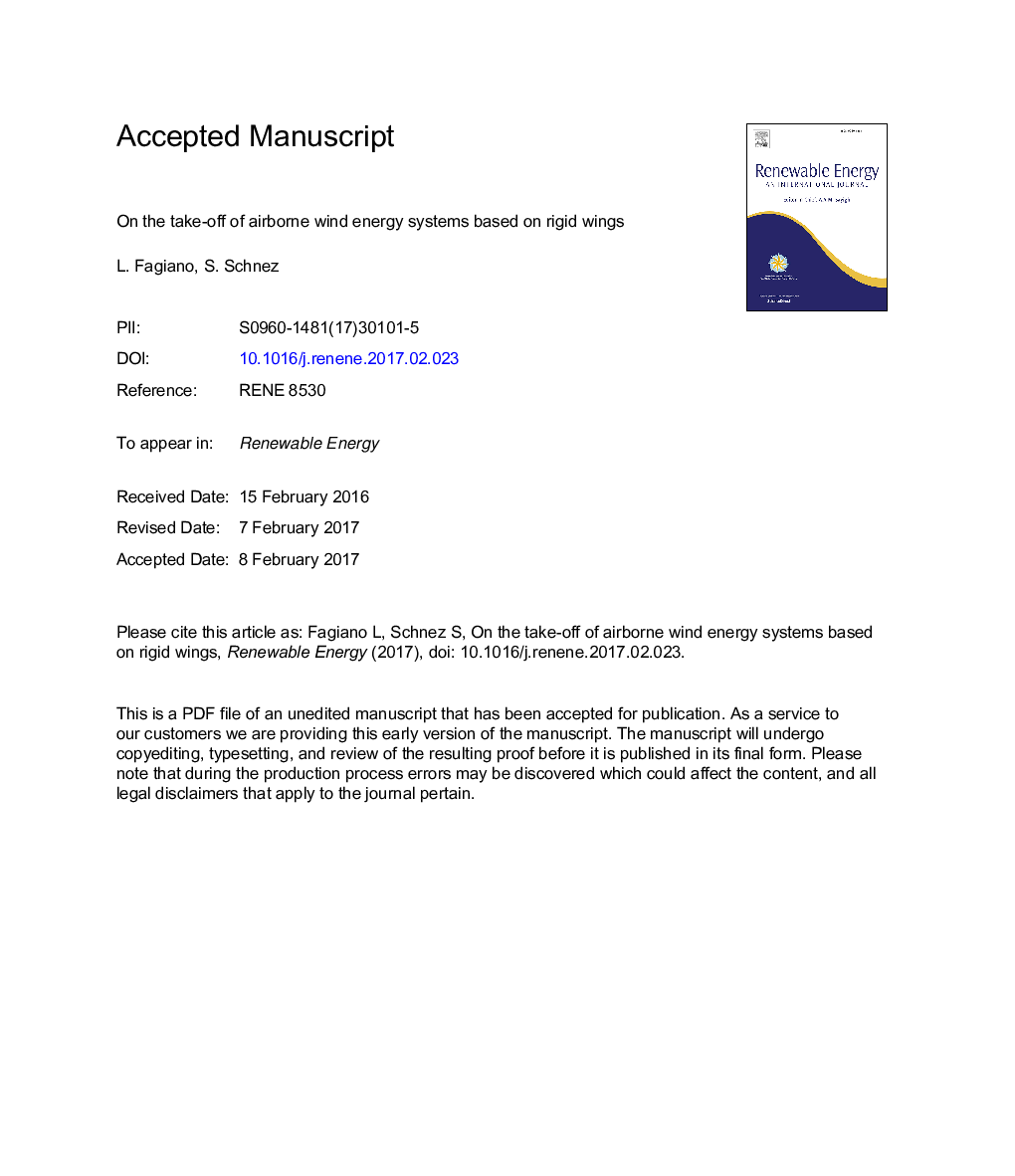| Article ID | Journal | Published Year | Pages | File Type |
|---|---|---|---|---|
| 4926731 | Renewable Energy | 2017 | 31 Pages |
Abstract
The problem of launching a tethered rigid aircraft for airborne wind energy generation is investigated. Exploiting well-assessed physical principles, an analysis of four different take-off approaches is carried out. The approaches are then compared on the basis of quantitative and qualitative criteria introduced to assess their technical and economic viability. In particular, the additional power required by the take-off functionality is computed and related to the peak mechanical power generated by the system. Moreover, the additionally required on-board mass is estimated, which impacts the cut-in wind speed of the generator. Finally, the approximate ground area required for take-off is also determined. After the theoretical comparison, a deeper study of the concept that is deemed the most viable one, i.e. a linear take-off maneuver combined with on-board propellers, is performed by means of numerical simulations. The simulation results are used to refine the initial analysis and further confirm the viability of the approach.
Related Topics
Physical Sciences and Engineering
Energy
Renewable Energy, Sustainability and the Environment
Authors
L. Fagiano, S. Schnez,
